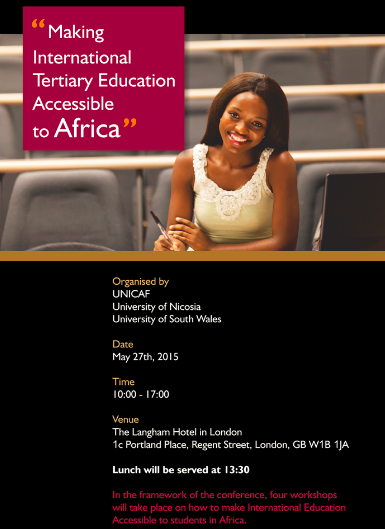Volume V, #11
Guest letter by Karan Khemka, Co-Head of Education Practice at Parthenon-EY
As East Africa is the world’s fastest growing market for higher education, I find myself there frequently. On one of my recent trips to Kampala, the capital of Uganda, I met with the founder and CEO of a start-up university. Having invested tens of millions of dollars to launch the new institution, he calls the university a “gift to his country” – albeit one that appears likely to add substantially to his net worth. But I have trouble paying attention to our conversation; he is wearing a double-breasted navy suit with short sleeves like a T-shirt. I have seen short sleeve safari suits, but a proper double-breasted short-sleeved suit with an office shirt with matching sleeve length underneath? This was an indication of what was to come in our conversation.
“We will teach people English and Engineering, and also how to make soap and baskets,” he says to me. “I am building the Harvard of Africa.”
In every conversation with a university founder from Santiago to Port Hobart it is only a matter of time before Harvard is mentioned.
The Harvard name dropping conversation takes different forms. I’ve heard the following variations. In Bangladesh: “This will be the Harvard of Dhaka.” In the United Arab Emirates: “I am building the Harvard of satellite imaging.” And in Sao Paolo: “We are creating the Harvard of Brazilian jiu-jitsu.” Or, perhaps most egregious - the Ivy League of Bhutan.
I don’t blame the entrepreneurs or governments behind these statements; they believe they are responding to the market. Having a bachelors degree from a globally ranked university is the new must-have luxury for middle classes in the emerging markets of Asia, and now Africa. A world-class university has supplanted the flag carrier airline and emblematic airport as a source of national prestige.
***
In my discussions with education entrepreneurs and government officials in these markets, I’m increasingly relying on a telephonic analogy to help them better redirect their resources. Whereas twenty years ago, developing markets were viewed at a significant disadvantage in the IT revolution due to their lack of infrastructure – specifically wires, pipes or fiber to the end-user – the situation is now reversed. The lack of expensive, less efficient infrastructure has pushed emerging economies to adopt more advanced and effective technologies such as 4G mobile connectivity.
This effect has allowed some developing markets to “leapfrog” ahead of their developed counterparts in certain respects. For example, Kenya leads the world in adoption of mobile payments. While Americans are struggling with the concept of a mobile wallet, over two-thirds of Kenyans use M-PESA, the payment system launched by Safaricom, the country’s largest mobile operator. Fully 25% of the country’s GNP flows through the system. And according to the mobile industry trade association GSMA, of the six billion connected smartphones expected within the next five years, 80% will be in emerging markets.
At the risk of dropping another H-bomb, I’m going to paraphrase former Harvard President Derek Bok (“If you think education is expensive, try ignorance”): “If you think wireless is expensive, try education.” While the direct cost of building out tertiary education systems in developing economies amounts to billions of dollars, the indirect cost of building out less efficient educational infrastructure that will be hard to replace has the potential to cost these economies hundreds of billions over the coming decades.
This is why my response to the Harvard reference is to do my level best to avoid being distracted by short-sleeved double-breasted suits and focus my attention on educating would-be education entrepreneurs on the higher education equivalents of 4G technology. University Ventures has previously written about many of these, including competency-based education, stackable credentials, the German dual-education model, new delivery models, and new revenue models.
While U.S. and UK universities struggle with innovation, countries like Kenya and Uganda must seize the opportunity to leapfrog directly to less expensive, more efficient models of higher education that will yield better outcomes for students. Doing so will educate and empower millions who can’t afford awkward imitations of expensive western products, like the short-sleeved double-breasted suit.
University Ventures (UV) is the premier investment firm focused exclusively on the global higher education sector. UV pursues a differentiated strategy of 'innovation from within'. By partnering with top-tier universities and colleges, and then strategically directing private capital to develop programs of exceptional quality that address major economic and social needs, UV is setting new standards for student outcomes and advancing the development of the next generation of colleges and universities on a global scale.


Comments